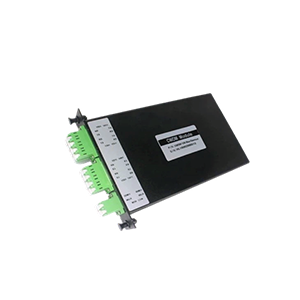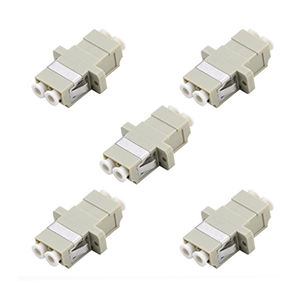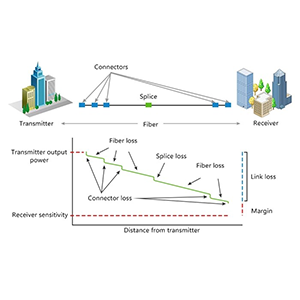The UK is vigorously promoting the construction of fiber optic networks. This article will explore the optimal burial depth of fiber optic cables in the UK. We first outline the relevant regulations and implementation guidelines in the UK and analyze their requirements for the burial depth of fiber optic cables. Next, we analyze the main factors affecting the burial depth of fiber optic cables in the UK, including different geographical environments and safety protection, maintenance convenience, etc.
Then, we introduce in detail the burial depth of fiber optic cables in urban areas in the UK, including the minimum/recommended depth and the treatment methods for special locations. Finally, we explore the burial depth of fiber optic cables in non-urban areas in the UK and analyze how to balance safety and economy.
Regulations and standards for burial of fiber optic cables in the UK
The regulations and standards for burial of fiber optic cables in the UK are mainly stipulated by the National Telecommunications Act and the Road Traffic Act. The burial depth of optical cables is usually required to be above 0.6 meters to prevent external damage. At the same time, it is necessary to follow the planning and construction requirements of the local government to ensure a safe distance from other underground facilities. In addition, the construction unit must obtain the necessary permits and follow safety standards and environmental protection measures to ensure the compliance and efficiency of the burial operation.
In the UK, fiber optic cable laying mainly needs to comply with the following important regulations and standards:
- Manual of Road Engineering (MCHW):
- This is the main technical guide for road construction and maintenance in the UK.
- It contains specific requirements for laying fiber optic cables under roads.
- National Roads and Street Works Act (NRSWA):
- This law sets out the permits and rules for various pipeline works on public roads and streets.
- It also involves the laying standards of pipelines such as fiber optic cables.
- National Electricity Safety Standard (ESQCR):
- This standard sets out the safety requirements for power lines and related pipelines.
- There are also corresponding burial depth regulations for fiber optic cables that share trenches with power lines.
- Internal guidelines of British Telecom (BT):
- As the main telecommunications operator in the UK, BT has formulated detailed technical standards for the burial of fiber optic cables.
- These standards are also often referenced by other telecommunications companies.
According to these standards, the main depth requirements for the burial of fiber optic cables in the UK are as follows:
- Buried under roads:
- Under major roads, the minimum burial depth of fiber optic cables is 0.9 meters.
- Under sidewalks, the burial depth can be reduced to 0.45 meters.
- Sharing trenches with power lines:
- When sharing trenches with high-voltage power lines, optical fiber cables should be buried less than 1.2 meters below the power lines.
- When sharing trenches with low-voltage power lines, the minimum burial depth is 0.6 meters.
- Rural areas:
- In rural areas, the burial depth of optical fiber cables can be appropriately reduced to about 0.45 meters.
In general, the relevant regulations and standards in the UK provide clear depth requirements for the burial of optical fiber cables to ensure safety and subsequent maintenance.
Factors affecting the burial depth of optical fiber cables in the UK
Factors affecting the burial depth of optical fiber cables in the UK include geographical environment, soil type and climatic conditions. In urban areas, the burial depth is usually 0.6 meters to avoid conflicts with other underground facilities. In mountainous or rocky areas, the depth may increase to more than 1 meter to prevent physical damage. In addition, roads and railways with heavy traffic need to be buried deeper to resist external pressure and interference. These factors together determine the safety and stability of the optical cable.
When determining the burial depth of optical fiber cables in the UK, the following key factors need to be considered comprehensively:
1. Geographical environment differences:
(1) Urban areas:
- Dense roads and complex underground pipelines require a deeper burial depth.
- According to the standard, optical fiber cables under major roads should be buried at a depth of less than 0.9 meters.
(2) Suburban and rural areas:
- There is relatively little surface activity, so a shallower burial depth can be used.
- According to the standard, the buried depth of optical fiber cables in rural areas can be reduced to about 0.45 meters.
(3) Special locations:
- For locations that need to be crossed, such as railway lines and rivers, a deeper buried depth should be adopted.
- To enhance the safety and anti-interference ability of the cable.
2. Safety protection factors:
(1) Prevention of external damage:
- A deeper buried depth can better prevent the cable from being damaged by external forces.
- Such as potential risks caused by vehicle rolling and surface construction.
(2) Natural disaster resistance:
- Deeper burial can enhance the ability of cables to resist natural disasters (such as floods, landslides, etc.).
- Ensure the continuous and reliable operation of the optical fiber network.
3. Maintenance convenience:
(1) Subsequent maintenance needs:
- Reasonable burial depth is conducive to the subsequent maintenance and inspection of optical fiber cables.
- Excessive burial will increase maintenance difficulty and cost.
(2) Coordination with other pipelines:
- Optical fiber cables should be buried at the specified location and depth, and staggered with other underground pipelines.
- To facilitate future pipeline maintenance and management.
In general, the burial depth of fiber optic cables in the UK needs to balance factors such as geographical environment, safety protection and maintenance convenience to meet the requirements of relevant regulations and standards.
The burial depth of fiber optic cables in urban areas in the UK
In urban areas in the UK, the burial depth of fiber optic cables is generally required to be between 0.6 meters and 1 meter. This depth is intended to avoid conflicts with other underground facilities (such as water pipes and cables) and reduce the risk of damage. In addition, the dense traffic and construction activities in the urban environment also prompt strict regulations on the burial depth to ensure the safety and reliability of optical cables.
In urban areas of the UK, the burial depth of optical fiber cables mainly follows the following requirements:
1. Main urban roads:
- Minimum burial depth: 0.9 meters
- Recommended burial depth: 1.0-1.2 meters
- Protection measures: Use pipes or metal protective pipes to strengthen protection
2. Secondary urban roads:
- Minimum burial depth: 0.75 meters
- Recommended burial depth: 0.9-1.0 meters
- Protection measures: Pipe protection or metal protective pipe
3. Sidewalks:
- Minimum burial depth: 0.45m
- Recommended burial depth: 0.6m
- Protection measures: reinforced concrete protection plate or plastic pipe
4. Green belt/weed field:
- Minimum burial depth: 0.45m
- Recommended burial depth: 0.6m
- Protection measures: plastic pipe protection
In urban areas, the burial depth of fiber optic cables needs to be deep enough to withstand vehicle loads, resist external damage, and facilitate subsequent maintenance.
For some special locations, such as crossing railway lines, there will be more special requirements:
- Under the railway line:
- Minimum burial depth: 1.2 meters
- Protection measures: Use pipe penetration or jacking to cross the railway line
By increasing the burial depth and taking special protection measures, it is possible to ensure that optical fiber cables can pass safely and reliably under key infrastructure such as railways. In short, there are clear standard requirements for the burial depth and protection methods of optical fiber cables in urban areas in the UK to ensure network security and reliable operation.
Burial depth of optical fiber cables in non-urban areas in the UK
In non-urban areas in the UK, the burial depth of optical fiber cables is usually 0.4 meters to 0.6 meters. Since there are relatively few underground facilities in these areas, the burial depth can be appropriately reduced. However, geological conditions and climate factors, such as soil type and water level changes, still need to be considered to ensure that the optical cable is not damaged. In some specific environments, such as mountainous or humid areas, the burial depth may need to be increased to ensure the long-term safety and stability of the optical cable.
In the suburbs and rural areas of the UK, the requirements for the burial depth of optical fiber cables are relatively loose, mainly reflected in the following aspects:
1. Suburban areas:
- Minimum burial depth: 0.6 meters
- Recommended burial depth: 0.75-0.9 meters
- Protection measures: The use of pipes or protective pipes can be appropriately reduced
2. Rural areas:
- Minimum burial depth: 0.45 meters
- Recommended burial depth: 0.6 meters
- Protection measures: Generally, simpler plastic pipes can be used for protection
3. Fields/woodlands:
- Minimum burial depth: 0.45m
- Recommended burial depth: 0.6m
- Protection measures: Protective measures can be appropriately reduced to reduce costs
4. Mountainous/hilly areas:
- Minimum burial depth: 0.6m
- Recommended burial depth: 0.75-1.0m
- Protection measures: The protective performance of pipelines or protective pipes needs to be strengthened
In non-urban areas, due to relatively less surface activity, the burial depth of optical fiber cables is relatively shallow. This not only reduces engineering costs, but also facilitates subsequent maintenance. But at the same time, attention should be paid to safety issues, especially in some mountainous areas, woodlands and other environments.
Appropriately deepening the burial depth and taking enhanced protection measures can effectively reduce the risk of cable damage. In general, in the burial of optical fiber cables in non-urban areas, it is necessary to balance safety and economy, and take appropriate burial depth and protection measures according to actual conditions.
Summary
Determining a reasonable burial depth for optical fiber cables is the key to the construction of optical fiber networks in the UK. As a well-known supplier of optical communication products in the industry, our company has long been committed to providing high-quality optical fiber network solutions for British customers. We have rich practical experience in optical fiber cable engineering and can provide you with professional design and construction guidance.
Our products and services fully comply with relevant British regulations and standards, and are at the industry’s leading level in terms of safety, reliability and economy. At the same time, our team of engineers will tailor the best optical fiber cable burial solution for you according to your specific needs. Contact us now to learn more.
FAQ on how deep should optical cables be buried in the UK
Fiber optic cables should typically be buried at a depth of 60 centimeters (about 24 inches).
Yes, the UK has guidelines set by organizations like the National Joint Utilities Group (NJUG) that recommend burial depths.
Soil type, local regulations, and proximity to other utilities can all influence the required depth.
Shallow burial can lead to damage from surface activities, such as construction or landscaping.
Generally, the depth remains consistent, but urban areas may have additional protective measures due to higher surface activity.
Using warning tapes or markers above the cable can help prevent accidental damage during excavation.
Yes, but additional protective conduits may be necessary to shield the cables from potential damage.
Yes, it’s essential to contact local utility providers to avoid damaging existing infrastructure.
Using a cable depth gauge or following the recommendations of a professional installer can help maintain the correct depth.
Yes, there are cables specifically rated for direct burial that are designed to withstand environmental conditions.




